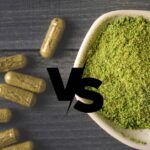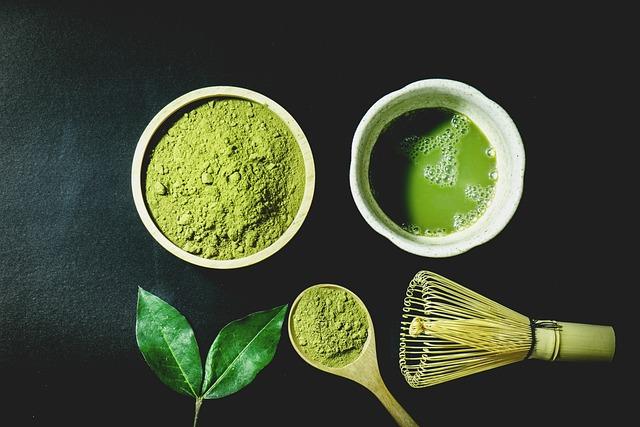Kratom is a herbal supplement that has become increasingly popular in recent years due to its potential to treat chronic pain and other conditions such as depression and anxiety. The active drug in kratom is an alkaloid known as mitragynine. Mitragynine is responsible for the majority of the therapeutic effects of kratom. It is believed to interact with opioid receptors in the brain, producing a range of effects from pain relief to sedation. This article will explore the active drug in kratom, its therapeutic properties, and potential side effects.
Exploring the Benefits and Risks of Kratom
Kratom is a herbal supplement derived from a Southeast Asian tree with a long history of use in traditional medicine. In recent years, kratom has become increasingly popular in the West as an alternative therapy for a range of health issues. While there are some potential benefits associated with kratom, there are also many risks that must be considered.
So, what is the active drug in kratom?
The answer is somewhat complicated. Kratom contains more than 40 compounds, but the two main active ingredients are mitragynine and 7-hydroxymitragynine. Mitragynine is the more abundant of the two and is believed to be the primary source of kratom’s effects. While 7-hydroxymitragynine is present in much smaller concentrations, it is thought to be up to 30 times more potent than mitragynine.
The effects of kratom vary depending on the dose and the individual, but it is generally believed to produce both stimulant and sedative effects. At lower doses, it can act as a stimulant, increasing alertness and energy. At higher doses, it is said to produce a more sedative effect, reducing pain and anxiety.
While kratom has been used for centuries in traditional medicine, there is still a lot we don’t know about its potential benefits and risks. Studies have suggested that kratom can help with pain relief, anxiety, and even opioid withdrawal, but more research is needed to confirm these claims. On the other hand, there is evidence to suggest that kratom can be addictive and can cause significant side effects, including nausea, vomiting, and confusion.
Ultimately, the decision to use kratom should be made with caution and after consulting with a healthcare provider. While there may be some potential benefits, the risks of using kratom are still unknown and could be significant.
What Is the Chemistry Behind Kratom?
Kratom is a plant-based product that has become increasingly popular in recent years due to its purported analgesic and mood-elevating properties. It is derived from the leaves of the Mitragyna speciosa tree, which is native to South East Asia. The active chemicals in kratom are known as alkaloids, which are naturally occurring compounds found in many plants. The two main alkaloids in kratom are mitragynine and 7-hydroxy mitragynine, which are thought to be responsible for the effects of kratom.
The chemistry behind kratom is still not completely understood, and further research is needed to identify the exact mechanisms of action of these alkaloids. However, it is believed that the alkaloids bind to opioid receptors in the brain, which is thought to be responsible for the pain-relieving and mood-elevating effects of kratom. These alkaloids are also believed to interact with other neurotransmitters, such as serotonin and dopamine, which could explain the reported anti-anxiety and antidepressant effects of kratom.
While the effects of kratom have been widely reported, its safety is still largely unknown. There are some reports of adverse effects associated with kratom use, such as liver toxicity, nausea, and insomnia. Additionally, there is some evidence that kratom can be habit-forming and may interact negatively with other drugs. Therefore, it is important to speak with a medical professional before using kratom.
Investigating the Effects on Human Health
Kratom, a plant native to Southeast Asia, is becoming increasingly popular in the United States for its purported medicinal benefits. It is purported to be a natural pain reliever, help reduce anxiety and depression, and even help with opioid addiction. However, the potential effects of kratom on human health are largely unknown, and the scientific evidence is limited.
Kratom contains two active ingredients, mitragynine, and 7-hydroxy mitragynine, both of which act as opioid agonists. This means that they activate the same receptor systems in the brain as opioids, such as morphine and oxycodone. However, the effects of kratom on the human body are not fully understood and have not been extensively studied.
The few studies that have been conducted on the effects of kratom on human health have mostly been small-scale and did not use rigorous scientific methods. Some studies have reported that kratom can be beneficial for some people, but there are also reports of adverse effects, including nausea, vomiting, constipation, itching, and insomnia. In addition, there are reports of serious side effects, such as seizures, respiratory depression, and even death.
Given the lack of research and reports of adverse effects, it is important to approach kratom with a skeptical eye and consider the potential risks before using it. More research is needed to better understand the potential benefits and risks of kratom on human health. Until then, it is important to weigh the risks and potential benefits when considering whether to use this drug.
What is the Legal Status of Kratom?
Kratom, a tropical evergreen tree native to Southeast Asia, has been used in traditional medicine for centuries. Its leaves contain a number of active drugs, including mitragynine and 7-hydroxy mitragynine, which can produce stimulant and opioid-like effects and are the main active components of the plant. In recent years, kratom has become increasingly popular in the Western world, with people using it for a variety of reasons, including pain relief, energy boost, and as a mood-booster.
Despite its growing popularity, the legal status of kratom and its active drugs is still uncertain. In some countries, such as the United States, kratom is classified as a controlled substance and is, therefore, illegal to possess, use, or distribute. However, in other countries, such as Canada, kratom is not regulated, meaning it can be purchased without a prescription.
The safety and efficacy of kratom and its active drugs remain the subject of much debate. While many people have claimed that kratom can be beneficial in treating a number of conditions, including pain, anxiety, and depression, there is still a lack of scientific evidence to support these claims. Furthermore, due to its potential for abuse and addiction, there is some skepticism about the safety of kratom and its active drugs.
In summary, the legal status of kratom and its active drugs is still uncertain and the safety and efficacy of the plant remain the subject of much debate. Until further research can be conducted to assess the potential risks and benefits of kratom, it is important to use caution when considering the use of kratom or its active drugs.
Comparing Different Strains
When it comes to Kratom, there is a wide range of strains available, and it can be difficult to determine which one is right for you. While most Kratom strains contain the same active compound, mitragynine, there are some differences in the amount of the active drug present in each strain. It is important to understand these differences before choosing a strain.
The first thing to consider is the alkaloid content of each strain. Alkaloids are the active compounds in Kratom, and they can vary greatly based on the strain. For example, some strains, like Red Bali, contain more of the active compound mitragynine than others, like Green Malay. While both are considered active, the amount of the active drug present in each strain can vary.
Next, it is important to consider the effects of each strain. While it is true that all Kratom strains have the same active compound, different strains can have different effects. For example, Red Bali is known for its sedative effects, while Green Malay is known for its energizing effects. It is important to understand the effects of each strain before making a decision.
Finally, when it comes to comparing different strains of Kratom, it is important to consider the safety of each strain. Kratom can be dangerous if taken in large amounts, and it is important to understand the risks associated with each strain before making a decision. Some strains, like Red Bali, have been linked to a higher risk of side effects, while other strains, like Green Malay, are generally considered to be safer.
When it comes to comparing different strains of Kratom and their active drug, it is important to consider the alkaloid content, the effects of each strain, and the safety of each strain. By understanding the differences between the strains, it is possible to make an informed decision about which strain is right for you.
Conclusion
The active drug in kratom is called mitragynine, which is an alkaloid derived from the leaves of the kratom tree. Mitragynine is a powerful psychoactive compound that can have both stimulating and sedating effects on the body. Research into the medicinal properties of kratom is ongoing, and it is believed that its extract may have potential therapeutic benefits.






